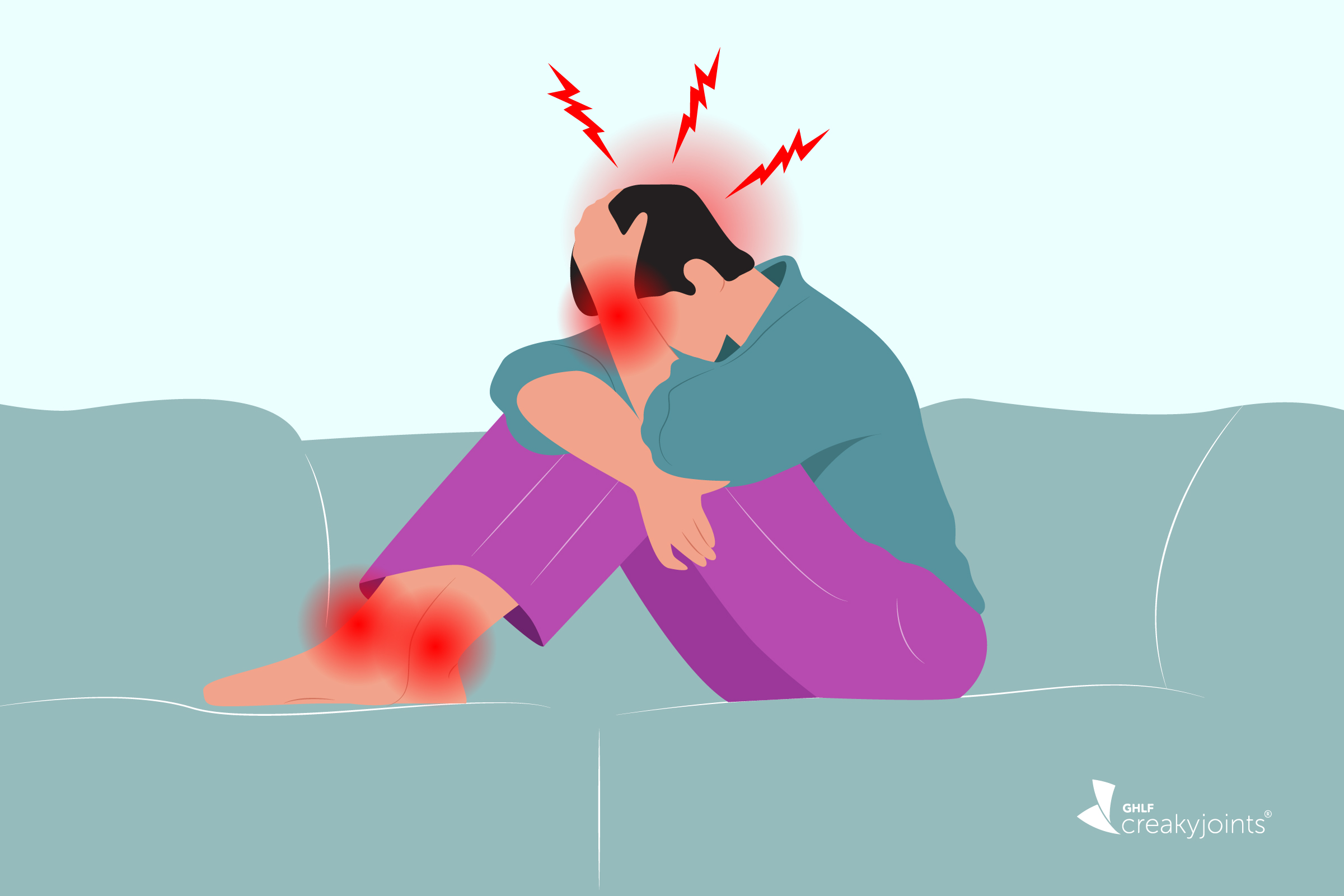Discover the symptoms of brain fog linked to migraine and learn coping strategies to manage cognitive challenges.
New GHLF Survey Aims to Identify Areas for Improvement in the Treatment of Migraine
New GHLF Survey Aims to Identify Areas for Improvement in the Treatment of Migraine
The Up-End Migraine Project reveals key gaps in episodic migraine care, aiming to drive change and improve treatment options for patients through insights from both providers and patients.
September 27, 2024
GHLF STAFF

At the Global Healthy Living Foundation (GHLF), we’re committed to improving the lives of people living with migraine, which is why we launched the Up-End Migraine Project, short for “Understanding PrEvention Needs in Episodic Migraine.” At the heart of this project is a simple but powerful belief that by listening to and learning from both health care providers and patients, we can drive meaningful changes in how migraine attacks are treated.
The goal is to better understand the treatment needs of those with episodic migraine, especially in primary and emergency care settings, and to ensure patients receive the best possible care.
Through this initiative, we’re gathering valuable insights from a diverse range of health care providers and patients to help inform and educate the community. By sharing our findings, we hope to help both you and your health care provider find the treatment options that best fit your needs.
“We’re hoping that results we have learned from the survey can open up a dialogue for better treatment care across the board for migraine patients,” says Sarah Shaw, Associate Director, Diversity, Equity and Inclusion at GHLF, who lives with chronic migraine. “Whatever we can do and share to avoid migraine patients from going from episodic migraine attacks to chronic migraine attacks is crucial.”
What We’ve Learned from Health Care Providers
Our survey of health care providers who treat migraine revealed some important findings:
- Acute treatments: Most doctors (61 percent) recommend over-the-counter (OTC) medications like acetaminophen, aspirin, and caffeine combinations to their patients. Nonsteroidal anti-inflammatory drugs (NSAIDs) are also a common recommendation, with 58 percent of doctors suggesting them for managing migraine pain.
- Prescription medications: While triptans are commonly prescribed, newer medications like gepants are prescribed less often — likely due to insurance issues or lack of awareness about these options.
- Preventive treatments: Botox is the most commonly prescribed preventive treatment for migraine (42 percent), followed by beta-blockers like Metoprolol. Unexpectedly, newer treatments such as CGRP inhibitors aren’t as widely used yet.
“What’s surprising is the variety in how providers are treating migraine,” notes Erik Stone, MA, Associate Director, Learning Experience Design at GHLF, who lives with migraine. “At this time, our results suggest that treatment approaches differ widely, leading to inconsistencies in care and potentially suboptimal outcomes for patients. This lack of standardization suggests a need for more awareness of the current guidelines and a more cohesive approach to treating migraine.”
These results also highlight the gap between traditional treatments and newer, potentially more effective options. “Newer, targeted treatments are a game-changer for migraine patients,” notes Shaw, “but it’s just as important to ensure that health care providers, particularly those treating episodic migraine, have access to these options and the necessary education.”
What We Learned from Patients
Our survey findings reveal significant insights into the experiences of migraine patients:
- 59 percent of migraine patients are or have been under the care of a primary care provider for their migraine management.
- 43 percent of patients express only partial satisfaction with the treatment they’ve received for migraine, while 75 percent are eager to explore new treatments that may offer equal or greater effectiveness.
- Notably, health care disparities are evident, with 55 percent of racial minority patients citing lack of insurance coverage as a reason for not using medications to reduce migraine frequency, compared to only 20 percent of white patients.
How to Talk to Your Doctor About Your Migraine Treatment
Here are some tips to help you make the most of your next doctor’s appointment:
Track Your Migraine
Maintaining a headache diary can help you and your doctor identify patterns in your migraine. Jot down when they occur, how long they last, what possible triggers you’ve noticed, what medications you take that are helpful (or not effective) and the symptoms you experience. This information helps your doctor create a personalized treatment plan that’s more effective for your needs.
Understand Your Treatment Options
There are two main categories of migraine treatments: acute treatments (which you take during a migraine attack) and preventive treatments (which you take regularly to prevent migraine). Knowing the difference between these can help you ask better questions. For example, if you’re taking an acute treatment but still getting frequent migraine attacks, you can ask, “Should I be on a preventive medication?”
Ask About Newer Medications
While triptans and NSAIDs are commonly prescribed, there are newer options like gepants and CGRP inhibitors. If your current treatment isn’t working, ask your doctor about these newer medications: “Could gepants or CGRP inhibitors be a better option for me?” You can also share with your providers the updated position statement from the American Headache Society, supported alongside GHLF and multiple migraine organizations regarding the importance of CGRP targeting therapies and encouraging them as first line options .
Talk About Side Effects
Many common migraine treatments, especially OTC medications, can have side effects if taken too often or you might experience medication over-adaptation headache. Let your doctor know if you’re worried about these side effects. For example, you could say, “I’m concerned about taking too many NSAIDs — are there other medications we can try?”
Be Honest About Your Symptoms
Your doctor relies on your feedback to adjust your treatment. If your current treatment isn’t working, don’t hesitate to tell them. It’s also important to bring up to your doctor if the treatments you’re currently taking are only giving you minimal or half relief from a migraine attack. You might say, “I’m still getting migraine despite taking my medication. Can we explore other options?”
Ask When It’s Time to Try Something New
Sometimes, it can be hard to know when it’s time to change treatments. If your current plan isn’t effective, ask your doctor when they think it’s time to try something new. For instance, “If this treatment doesn’t improve my symptoms in a month, what should we try next?”
Discuss Insurance Hurdles
Newer medications, like gepants or CGRP inhibitors, might not be covered by your insurance or you may experience insurance access issues like step therapy before you get coverage for the newer medications. If cost or insurance barriers are a concern, don’t hesitate to advocate for yourself. Ask your doctor if these medications are necessary for your treatment, and if so, request that they write an appeal letter to your insurance company. You could say, “I believe these medications are crucial for my care. Can you help by submitting an appeal to my insurance?”
Moving Forward Together
At GHLF, we’re committed to helping patients like you get better care for migraine. We hope that by sharing the insights we’ve gathered through the Up-End Migraine Project, we can help you feel more empowered to talk to your doctor about your treatment. Every person’s experience with migraine is unique, and we believe that by understanding those experiences, we can help improve migraine care for everyone.
Hear From More Experts and Patients Living with Migraine
Talking Head Pain is a podcast that confronts head pain, head on. Brought to you by the Global Healthy Living Foundation and hosted by migraine advocates Joe Coe and Sarah Shaw, this show explores how people living with migraine, cluster headache, and other types of intense head pain find ways to better manage their disease. Listen here.
This survey was supported by an educational grant from Pfizer Global Medical Grants.
Source:
SUBSCRIBE TO GHLF
RELATED POST AND PAGES
_
Was this article helpful?
YesNo



